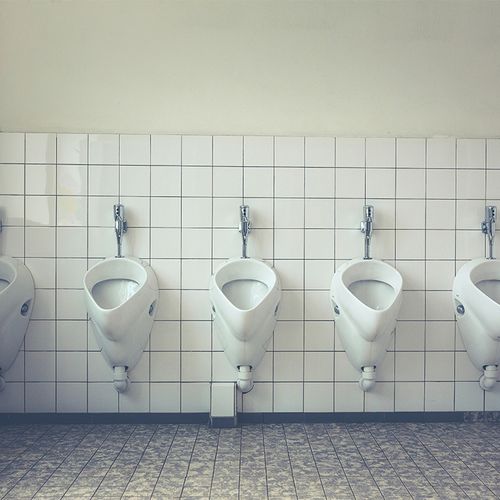Did you ever laugh so hard that you accidentally leaked a little urine? That's normal. But if you involuntarily urinate a link or a lot nearly every time you laugh, cough. sneeze or exercise—or sometimes when you do nothing at all—that's incontinence. The condition affects an estimated 24 million American adults, the majority of whom are women. Its primary causes are either anatomical or neurological. If you have it, you know it—but you don't have to live with it.
While not a life-threatening health problem, incontinence certainly is a life-limiting social problem. An outing becomes a logistical hassle when it must be planned around finding the public restrooms—not to mention carrying ab-sorbent pads wherever you go.
Stress Incontinence
With stress incontinence, damaged pelvic muscles allow urine to leak when a sudden action (a cough, an exercise) puts pressure on the bladder.
Injury while giving birth is a common anatomical cause. Vaginal delivery or a long labor before a C-section can weaken pelvic muscles and/or damage nerves around the vagina and the bladder. The longer the labor, the more children you had and the bigger your babies were, the more severe the damage may be.
It's common for mothers in their late 40s or 50s to develop stress incontinence, even if their children were born many years earlier. Muscle function normally decreases with age—and previously injured tissues are most susceptible.
Whether or not they ever give birth, as women age, incontinence risk increases. Here's why…
- Declining estrogen leads to thinning of the walls of the urethra (the tube that empties the bladder), creating a wider and weaker pipe-line for urine to flow through.
- Gravity's cumulative effects over the decades pull the pelvic organs out of their proper position.
- Some women inherit a genetic tendency toward weak collagen, a fibrous protein that makes up the urinary tract support structure, exacerbating age-related weakening.
What helps…
- Do Kegel exercises to strengthen pelvic muscles.
- Eat more fiber. Constipation puts pressure on the bladder. High-fiber foods, such as beans and whole grains, improve regularity.
- Avoid foods that irritate the bladder lining, including caffeine, carbonated beverages, citrus fruits and juices, spicy foods and alcohol.
- Take cranberry extract daily to prevent bacteria from adhering to bladder walls and triggering infection. Avoid cranberry juice—Its acidity irritates bladder tissues.
- Don't force or limit fluids. Let thirst be your guide for when and how much to drink. I recommend 32 ounces of fluids per day.
- Lose excess pounds, which can put extra pressure on pelvic organs.
- Quit smoking. Smoking impairs oxygen flow, weakening muscles.
- See a physical therapist, who may use low-current electrical stimulation and targeted exercises to improve pelvic muscle strength.
If these measures don't help, ask your doctor about surgical options, such as the tension free vaginal tape (TVT) or the transobturator sling (TOT). In these procedures, a sling of nylon-like mesh tape is inserted via tiny incisions in the abdomen and/or vagina, creating a hammock that supports the urethra. When a cough or sneeze pushes the urethra down, the tube is forced against the hammock and closed off, so urine doesn't escape. Up to 90% of patients get immediate incontinence relief, and most remain leak-free after five years. Side effects may include slower or incomplete urination.
Another anatomical cause of stress inconti-nence is called intrinsic sphincter deficiency (SD), in which urine leaks almost constantly—even when a woman's bladder is nearly empty. The urethral sphincter is made of muscles and soft tissue that surround the urethra where it meets the bladder, squeezing the tube closed. An injury to the muscles or soft tissue can weak-en the watertight seal.
Breakthrough: A paste-like substance called Coaptite is injected into soft tissue near the sphincter, where it solidifies, partially blocking the urethra and helping the sphincter stay dosed when you want it to. Unlike injections of collagen, Coaptite does not provoke allergic reactions and does not need to be repeated periodically because it isn't absorbed into the body.
Urge Incontinence
This type of incontinence occurs when nerves in the brain, bladder or spine malfunction, caus-ing the bladder to contract inappropriately—so you leak before reaching a bathroom. Often, simply thinking about a toilet triggers blad-der contractions. Urge incontinence increases With age, perhaps due to changes in the net nerves' chemical signals. Dietary changes and surgery cannot help urge incontinence, but other liver treatments can…
- Bladder retraining. You delay urination as long as you can—then, over several weeks, you try to gradually increase the interval between trips to the toilet.
- Acupuncture. This can reduce urinary urgency and frequency and increase bladder capacity—perhaps by altering the release of brain chemicals that affect the central nervous system's control over involuntary body functions.
- Drugs that reduce bladder spasms, such as oxybutynin (Ditropan) or tolterodine (Detrol). Side effects include dry mouth—which may make you drink more, increasing the need to urinate. Rarely, these drugs may cause confusion or other cognitive side effects.
- Botox injections. This halts contractions by temporarily paralyzing the bladder. Currently it is used only for very severe cases, such as in patients who have had a stroke or who have multiple sclerosis. Injections must be repeated every six months or so, and health insurance generally does not cover it.
If you're having problems with incontinence, see a urogynecologist.
Referrals: American Urogynecologic Society (202-367-1167, www.augs.org). Even if you've lived with it for decades. you're never too old to be helped. I recently performed surgery for incontinence on an 87-year-old—and she says it has changed her life.
Acupuncture Halts Overactive Bladder
In a recent study, women with overactive bladder received either acupuncture using acupuncture points targeted for bladder control or general, non-targeted acupuncture once weekly for four weeks.
Result: Women who were given targeted, bladder-specific acupuncture had improved bladder capacity, while the other group reported no change in symptoms.
Theory: targeted acupuncture decreases the excess nerve stimulation that causes the bladder to feel full even when it is not.
